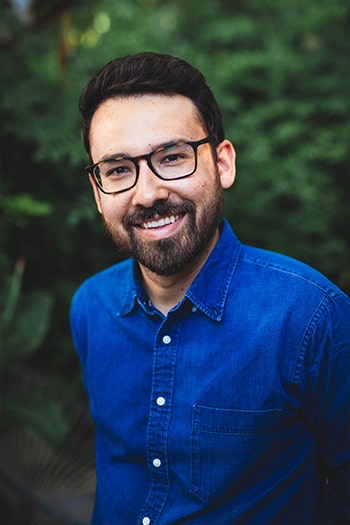Today, college students in the US have a multitude of options surrounding their scholastic goals, giving them the opportunity to find the best institution that will help them thrive both academically and socially. However, being faced with such a diverse set of choices may also cause students to experience a phase of indecision. As much as 20% to 50% may even enroll in college without deciding on a major, so it is very important that schools present themselves in a way that will make it easier for students to determine whether their institution is the right fit.
For a country as large as the United States, it gets even more complicated as higher education institutions will vary a great degree depending on whether it is run secularly or it is religiously-affiliated, whether the campus is at an urban or rural setting, whether it is a specialized school or a liberal arts institution, and whether it is open to a small or large population.
Marketing Higher Education Cohesively to Stay Competitive
With a wide range of choices, no one school can definitively plan on an exact number of enrollees in the following semester. The truth is that only about 8% of high school students have already prepared for a career and are college-ready by the time they graduate. Hence, marketing is a crucial area that higher education institutions should put considerable thought and effort into. However, more often than not, smaller institutions rely on a broad-stroke marketing approach.
This may have been a fruitful strategy twenty years ago when most students would rely on pamphlets and brochures handed out by guidance counselors. College fairs peppered with recruiters can be costly while covering only a small demographic. Scripted commercials have not withstood the test of time as they seem inauthentic and show less relevant information.
Another outdated practice is departmental delegation. Instead of having a dedicated marketing team, some institutions expect each college to bear their own weight in pulling in enrollees. Others will place this task on admissions and recruitment. In the end, these departments are spread thin, and following up on leads becomes less of a priority, and the marketing message can be conflicting even within one brand.
Tough Competition Despite a Growing Market
Today, despite a small number of college-ready students, data from the National Center for Education Statistics shows a promising rise in the number of enrollees. In 2016, 69.8% of high school graduates immediately enrolled in college for the fall. 2017 data that the Current Population Survey obtained from schools all over the US reflected a strong higher education enrollment number of 18.4 million students consisting of returning students, freshmen, and graduate school students.
This means that this number of students can go anywhere in the United States for a degree in higher education. Why not make it your institution? Let’s take a look at an actual case involving the University of San Diego School of Business as told to us by the Director of Marketing and Communications, Renata Ramirez. Upon taking on the role, Ramirez studied the marketing strategy implemented at the time versus the number of enrollees.
A Multi-Platform Digital Approach
The school was making progress in its digital efforts. However, the numbers were mediocre at best, particularly for their graduate programs. Before her time, the digital marketing strategy relied heavily on Google Ad Words for lead generation. With an inverse ratio of money spent versus leads converted to enrollees, it meant that they were spending good money with low returns.
By looking closely at who they should be focusing their marketing on, Ramirez determined that Google Ads were not enough. The new strategy shifted to other ad platforms including Facebook, Instagram, and LinkedIn. This created a brand omnipresence, which ensured that the audience knew that they existed, they were a viable choice, and moreover, they were the popular choice.
Customization of Campaigns Per Target Audience
Since they had set their sights on growing their graduate school enrollees—and some programs required a certain level of seniority or work experience—they started breaking down the strategy. By tweaking the percentages of campaigns directed at a specific platform, they were able to reach more people via LinkedIn versus Instagram or YouTube. The best part about this was they used the same amount of budget as the previous year.
In her time as Director, Ramirez tripled the number of leads and maintained a healthy conversion rate, so much so that the school decided to launch two new graduate programs. This only means that the demand for their school not only strengthened but widened as well.
The Power of Storytelling Through Videos
Sure, others schools are doing the same, but what else made an impact on this progress? Ramirez tells us that besides highlighting the features or strengths of each program, they started telling a story. Videos are a powerful medium and an easier way to digest information. Successful alumni were invited to tell their own stories starting from their experiences in the program up to the ways they have made a positive change in their own industries and communities. The faculty was not left out; they too, were included in short videos of their own as a way to showcase their presence and personality.
With videos from current students and alumni, audiences found personalities to relate to. They found people to aspire to and emulate. Being introduced to the faculty in this way allowed the audience to find out which values were upheld by the school, so they could decide whether these values were in line with theirs. By telling a story, the school provided a unique insight that would not be otherwise found in written materials or in ads focused on aesthetics and features. Since USD School of Business is nationally competitive, highlighting the awards and rankings in a different medium such as announcements and articles would just further cement their status in the public’s mind.
Of course, Ramirez continues to stress that these strategies they have now will continue to evolve over time and as they see fit, and that marketing agencies are a good source of help as a second set of unbiased eyes. Ideas are still placed on the table and alternative platforms are explored constantly.
A Generation That Responds to Artificial Intelligence
In an interview with Clayton Dean of Circa Interactive, a digital marketing agency geared towards higher education, he stressed that story-driven marketing as the core of a strategy is the current trend among colleges and other educational institutions.
People are no longer marketing to parents or to guidance counselors. Students are very much involved in the process of choosing what is right for them, and they do their research in easily digestible forms. This shift can be attributed to the millennial generation and their influence on Generation Z.
The generation that institutions are appealing to tend to be experience- and value-based. Features and programs can easily be compared across several institutions, but the experience one can gain is something exclusive and stays forever. The new generation is outspoken, political, open-minded, and very inclusive. Another unique attribute they possess is the premium they place on everything “instant.”
At Circa Interactive, they have developed various technologies that provide a solution to delayed responses and lack of online presence. Easy to maintain websites and landing pages, intuitive analytics software, and machine-learning AI chatbots are just some of them. For smaller institutions with limited funding, these technologies allow them to automate instead of hiring more people to do the work. For larger institutions, this means that their marketing team can do more by funneling that energy into other areas to make their strategy more aggressive.
If you manage the marketing efforts in a higher education institution, it is clear there is a lot to think about. If you would like to chat through some ideas, learn how to implement a new content strategy, or other ways to boost your marketing efforts, we would love to help. Contact LocalEyes to get a customized proposal today.

Founder at LocalEyes Video Production | Inc. 5000 CEO | Emmy Award Winning Producer





